On February 24, 2015, the Academy held its 2018th Stated Meeting at Duke University as part of a conference on ensuring the stability of the biomedical research enterprise in the United States. Richard H. Brodhead (President of Duke University) introduced the panel discussion, which was moderated by Nancy C. Andrews (Dean and Vice Chancellor for Academic Affairs, Duke University School of Medicine) and Sally Kornbluth (Provost and James B. Duke Professor in the Department of Pharmacology and Cancer Biology at Duke University). The panelists included Harold Varmus (then Director of the National Cancer Institute; currently, the Lewis Thomas University Professor of Medicine at Weill Cornell Medical College), Susan R. Wente (Provost and Vice Chancellor for Academic Affairs at Vanderbilt University), Tania Baker (E.C. Whitehead Professor of Biology at Massachusetts Institute of Technology), and Mark C. Fishman (President of the Novartis Institutes for BioMedical Research). The program also included a welcome from Jonathan F. Fanton (President of the American Academy). The following is an edited transcript of the discussion.
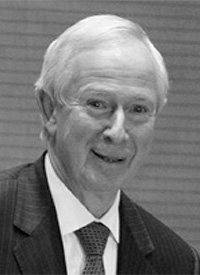
Richard H. Brodhead
Richard H. Brodhead is President of Duke University and the William Preston Few Professor of English. He was elected a Fellow of the American Academy in 2004 and served as Cochair of the Academy’s Commission on the Humanities and Social Sciences, which released its report, “The Heart of the Matter,” in 2013.
The American Academy is an organization that recognizes those who represent high accomplishment in the intellectual domain. But in the last fifteen years or so, the Academy has increasingly assumed a second function, which is to bring all that intelligence to bear on questions at the interface between policy, politics, social life, and academia in this country. That is not an easy relationship to facilitate. The American Academy’s ARISE (Advancing Research in Science and Engineering) report, released in 2008, is a product of those recent efforts. It comprehensively details the increasingly challenged ecosystem in which biomedical research (and other scientific research) takes place, and I believe it is one of the most important policy-research documents produced in recent years. ARISE, by the way, is a good title – “Arise! Wake up, your house is on fire!” In 2013, ARISE II was released, signaling that, unfortunately, the house is still on fire.
What people consider to be the standard environment for biomedical research is actually a fairly modern invention; it did not exist before World War II. I bring to you these astonishing numbers: The whole amount invested by the federal government in research and development in the year 1940 was $5 million. In the year 1960 it increased dramatically to $405 million. The number jumped to $4 billion in 1980, to $17 billion in 2000, and to $31 billion in 2010. So we think of this funding system as if it were permanent, but it was actually created recently and over a fairly limited period of time, and it could decline just as quickly. Even though the size of the investment has been diminishing in real dollars for over ten years, people have not yet realized that the world of endlessly increasing and enriching resources for research is not guaranteed.
One of the things university presidents do is berate members of Congress for their failure to invest in things like research. But it doesn’t turn out to be a persuasive strategy to go up to people and say, “You are so short-sighted.” One of the troubles is that when you go to Washington and say that more money needs to be invested in research, everyone agrees with you. It’s just that nothing really follows from that agreement.
You are all aware of the American invention called sequestration. This system was once considered too nonsensical to remain in place; now it is the new reality in which budgets are created in this country, and the fear of deficits means that both military and discretionary expenditure is kept under artificial restraints. Until that problem is solved, there will be no possibility of any increase in research funding. The American Association of Universities has been a big proponent of this. Our best argument in Washington has been to say, “Your solution to the fiscal deficit is creating another deficit.” This has been cunningly named the “innovation deficit.” By saving money through budget restrictions, we are failing to make investments that actually produce economic growth, individual prosperity, and other qualities we desire for our society.
The trouble is that mentioning the innovation deficit is just another more elaborate and interesting way of accusing policy-makers of shortsightedness and stupidity. And truth be told, the innovation-deficit argument, though I think it is a fine one in theory, has not actually ended up producing the effects we have hoped it would. So it seems to me that when a group like this one gathers, it is not just to lament the fact that the pie is not as big as we wish it were; it is because we need to think either of better arguments or of different, more ingenious and imaginative ways of approaching this whole subject altogether. If the history of American biomedical research becomes a history of continuous decline from the year 2003 on, the outcome will not be good for anybody. So we need not only to diagnose but to cure, which our panelists will help us do today. My thanks to you all for coming and sharing your wisdom.
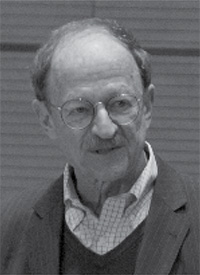
Harold Varmus
Harold Varmus is the Lewis Thomas University Professor of Medicine at Weill Cornell Medical College at Cornell University and the former Director of the National Cancer Institute. He was the co-recipient of the Nobel Prize for studies of the genetic basis of cancer. He was elected a Fellow of the American Academy in 1988.
Thanks for hosting this important discussion. Before we get embedded in a list of what is wrong with this enterprise and think about ways to fix it, let us reflect for a moment on just how important fixing it is – not just because the population, costs, and expanse of the enterprise have risen precipitously in the years since World War II, but because biomedical research in this country is without parallel in the world and essential for many aspects of our culture. In its construction, it reflects the imagination of Vannevar Bush in many ways: money is given by the government to investigators mainly at academic institutions who pursue basic research, the results of which are then translated into products and useful tools by industry. This pattern has been extremely effective. It forms the fiscal infrastructure that supports research for some of the biggest enterprises in the United States – health care and research tools. The former alone accounts for about 20 percent of our economy. Equally important, biomedical research is also tightly linked to the educational enterprise and is now a prominent feature on nearly all of our major university campuses, including this one; since the United States leads the world in the strength of its research universities, biomedical research is essential for another national characteristic that has been essential to our stature and economy.
In short, basic research, especially biomedical research, is a centerpiece of American enterprise, innovation, and development; it plays a very important role in the United States’ preeminence in science globally. Frequently, President Barack Obama speaks in glowing terms about his aspirations for American contributions to science, including his BRAIN initiative and a recently announced initiative on precision medicine. This is still a very strong system, so in trying to think about how to fix the current ills, we have to remember: “Do no harm.”
About a year and a half ago, I began meeting regularly with three distinguished colleagues of mine – Bruce Alberts, the previous president of the National Academy of Sciences and a longtime colleague at UCSF; Marc Kirschner, professor of systems biology at Harvard Medical School; and Shirley Tilghman, a distinguished molecular biologist who was also the president of Princeton for over a decade – to discuss our sense that life in the world of biomedical science is not what it used to be. Our concerns were not simply about the fact that biomedical scientists of all ages and abilities were having trouble getting grants. We have been equally concerned about many researchers’ ability to use the full range of their imaginations – especially young scientists just entering the system. These limitations on imagination and risk-taking are an inevitable consequence of the hypercompetitive atmosphere of a growing number of people chasing a shrinking pot of funds to support research. We have built a system founded on the false premise that the world of biomedical research can expand forever. We have created a Malthusian dilemma in which we train a lot of people, use those trainees in our laboratories to produce exciting results, and then expect the world to accommodate the careers of these trainees in the way that it accommodated our own. That obviously cannot go on forever.
We have had, as President Brodhead mentioned, a reduction in our budget in both real and constant dollars over the last several years, due most recently to sequestration and, over the longer term, to the failure of Congressional appropriators to keep up with inflation. Further, we have too many people pursuing too little money for research support at a time when the horizons of research in the biological sciences have expanded dramatically. Equipped with a detailed picture of the human genome, new techniques for analysis of proteins, and many other powerful tools, biomedical scientists have more opportunities than ever before to make unexpected discoveries and to apply those to the diagnosis and treatment of disease. But their resources for doing so are dwindling.
This Malthusian dilemma has created a hypercompetitive environment that, in my view, has undermined the atmosphere in which we do science. There is not enough time to do science in an unbridled fashion, imaginations are constrained by concerns about what the government wants from its grantees, and scientists are not taking the risks they ought to be taking or enjoying laboratory life as much as they should. And there are a number of measurable sources of the malcontent: the rising age at which people receive their first grant from the NIH; the heavy load of regulatory and compliance issues that universities need to face and pay for; and our concern that grant applications are increasingly made for projects in the domain of practical applications, as opposed to the basic research and curiosity-driven discovery that many of us here would endorse.
Bruce, Marc, Shirley, and I spent a lot of time talking about what we might be able to do to address some of these issues and we published our analysis and proposals in a widely read paper that appeared in April 2014 in the Proceedings of the National Academy of Sciences. Our first goal was to try to describe the system as we currently see it in dramatic terms; that has attracted a lot of attention and precipitated discussions not unlike this one on many campuses. Further, a number of senior scientists got together in August of last year at the Howard Hughes Medical Institute to discuss what might be done, a meeting that we also describe in the Proceedings.
Some of the issues that we feel need to be discussed today on this university campus include how we attract young people into science, how we train them, and what the expectations of training – especially graduate and post-doctoral training – should be. Is the current length of the training period right? Are we teaching people enough about the various alternative career opportunities to those in academia? Are we mentoring them in the right way? Are we structuring our labs correctly, with the right distribution of various kinds of trainees and staff scientists? Have we considered the possibility of worrying more about quality and balance than simply numbers of grants and of trainees when we evaluate each other? Have we thought about making greater use of staff scientists and trying to reduce the now awkwardly long time for postdoctoral training? Are we using the right metrics when we evaluate each other? Is it right to ask about the impact factors of journals in which one publishes as opposed to the quality of work? Is peer review up to the quality standard we would expect when carried out by journal editors and by NIH study sections? Are the funders of research issuing the best kinds of grants to promote the most imaginative and productive kinds of science? Or are they seeking short-term rewards through work that is unlikely to produce groundbreaking discoveries?
It is easy to list some of these questions and think about solutions, but it is harder to make the changes that might be required to restore our enterprise to better health. To propose the most effective solutions possible, we are interested in the idea of creating think tanks for biomedical scientists and others who are interested in the future of our field and the policies that will guide it. My colleagues and I are worried that too little effort has been put into building adequate datasets to analyze what happens to people who get trained in our field. We need to track what happens to them after they acquire their degrees, pursue additional training, and obtain their first, second, and third grants in order to analyze the results of the investment that NIH and other funders have made in the process. This may be essential to describing in compelling terms how we ought to fix the system.
My hope is that the ongoing recovery of our economy will allow Congress to provide more resources to the NIH and to other science funding agencies. However, we must also contend with the reality that the simple pattern of growth that has characterized our world cannot go on forever. We must give very serious thought to the question of how we can create a universe of biomedical research that is both sustainable and able to encourage the kind of productive work that has characterized American biomedical science for over fifty years – putting us in a position of world leadership that we are now in danger of losing.
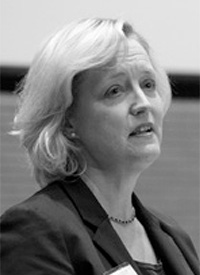
Susan R. Wente
Susan R. Wente is Provost and Vice Chancellor for Academic Affairs at Vanderbilt University.
I want to comment specifically on the training, development, and experience of our graduate students and postdoctoral fellows. I have long had a heartfelt passion for training; it is one of our fundamental callings as university faculty. Not just to make discoveries, but to actually train people in the process of making discoveries, and in that way point toward the future of discovery by the next generation of physician-scientists, biomedical scientists, and leaders in the biomedical enterprise.
The data is clear: biomedical graduate programs and postdoc training and fellowship programs take a long time. The median time for a PhD is 4.88 to 5.73 years for all the fields within biomedical research. Data suggest that the mean length of postdoctoral fellowship periods is around 7.8 years, summing together potentially multiple postdoctoral experiences for many individuals.
What are the consequences of this protracted training period? First, the positive: scientists have an extended period of time in which to explore their passion in depth, to develop very unique skillsets, to challenge themselves by working with different models and with different technologies. And the lengthy training time provides flexibility for those trainees in terms of future career decisions: they can reflect back on different things they learned during various training experiences. But the negative consequence is that scientists launch their independent careers very late. Currently, the average age at which new faculty with PhDs begin their independent careers is 37. The average age at which they have their first independent R01 (NIH research grant program) is 42. Those numbers are still higher for physician-scientists pursuing MD-PhDs. These long training periods hold our highly talented next generation in transient positions, at comparatively low pay, during what should be the most productive periods of their personal and professional lives.
Now, with this long training path, some might ask themselves, “Why do students go to graduate school? Why are our application numbers still increasing for our biomedical PhD programs? Why do people finish PhD training and go on to a postdoc?” Well, I think the reason is the passion that every scientist feels about the topic that he or she is studying, as well as the desire to make a contribution to discovering the unknown. I think it is also the inherent optimism and risk-taking nature of scientists; you have to be optimistic that the experiment will work or that your paper will get accepted or that your grant will get funded or that you may indeed get a job at the end of this long track. But I also think we have created an artificial economy in terms of how our training programs are constructed.
As we think about this, we need to ask some very difficult questions. Some of those fundamental questions are: What is a PhD needed for? What is the concrete purpose of that PhD training? In that light, are there some career paths in which a master’s degree would be equally valuable and a more appropriate investment of time and resources? A second question, then, is: What is a postdoctoral fellowship needed for?
Right now it is thought that about 90 percent of PhD graduates from R1 universities go on to do a postdoc fellowship; it almost seems to be a default next career step. I would challenge us to think carefully about why that is and about who does and does not need a postdoctoral fellowship. Can we shift toward an actual balance within our training of this next generation of scientists? In rethinking about these fundamental tenets of the system, we all have to realize that the culture of mixing the education, training, and working environments has been in place for decades. Graduate students and postdoc fellows are key parts of the mission of discovery in laboratories; at many universities, their role as teaching assistants makes them key parts of the education mission too. So in thinking about how we can or possibly should shift the culture, we also need to think deeply about the essential roles training programs play and how we might find a way to preserve them.
One change we should consider is how to give students opportunities to make career decisions earlier in their paths. One of those options is the NIH director’s new program for BEST (Broadening Experiences in Scientific Training) awards, which supports the expansion of career development activities for biomedical trainees. I would advocate for that program being expanded to more of our leading institutions to allow more young people to explore possibilities during their PhD training.
There are also many conversations about the postdoctoral fellowship experience itself, the salary levels for postdoctoral fellows, the length of time one should spend in a postdoc fellowship position. Finally, so often the metrics for evaluating mentors are those same generic metrics applied to all scientists: their number of grants, their number of publications, their citation indexes. But it seems that what trainees do at the end of the training period – be it PhD education or postdoctoral fellowships – should also be looked at when we evaluate mentors. The culture surrounding the training periods is full of incredible discovery and learning, and we should think of ways to shift how we are educating and training without breaking this culture.
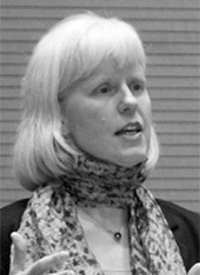
Tania Baker
Tania Baker is E.C. Whitehead Professor of Biology at Massachusetts Institute of Technology and an Investigator at Howard Hughes Medical Institute. She was elected a Fellow of the American Academy in 2004.
My goal here is to summarize some of the ideas we been discussing about the structure of academic labs. I want to begin by saying that academic labs are valuable places where education, mentoring, and curiosity-based science are done synergistically, bringing success to the students and the postdocs as well as making important new scientific discoveries.
However, we understand that there is some imbalance in the way our academic labs are normally organized. Some changes to that system are going to be very difficult to implement and will occur very slowly; others are experimental practices that universities can try and then gauge the impact of. As you have already heard, we have been discussing the fact that postdoctoral training is very long. One of several possible reasons is that the bar for getting a job at an academic university is extraordinarily high. The number of high-profile papers you have is important; candidates are also expected to have extremely detailed knowledge of their future plans. As a job candidate in an interview, you will be asked what your research is going to be about, whether you have preliminary data, what your first R01 will look like, what the first three graduate students in your lab are going to do, what your second R01 will look like, and so on. These sorts of requirements essentially exclude candidates who do not have the extremely extensive postdoctoral experience that Dr. Wente referred to. Trying to figure out how we can hire excellent people without their having to spend so much of the creative part of their life in the training and postdoctoral periods is something we are very interested in exploring.
Postdocs also, of course, go on to do jobs other than university professorships, many of which require at least some postdoctoral training. For example, journal editorships, many positions in pharmaceutical companies and biotech companies, and other jobs at teaching institutions all often require at least a short postdoc. So it is important that we look at the structure of the postdoctoral training period and see if it can be shortened and matched to an individual’s particular career goals.
We also discussed how to make biological science undergraduate degrees and master’s degrees more useful. Usually, an undergraduate degree in biology does not open many doors to exciting research – or exciting jobs. Often those who hold these degrees can find jobs as lab technicians; they can sometimes find other work in their field, but there may not be much upward mobility in the career path. A master’s degree is unfortunately often viewed – at least by the high-research schools – as sort of a failed PhD. The assumption is often that the student either decided not to finish his PhD or was counseled that pursuing a PhD was probably not in his best interest. But many of us here today believe that the master’s degree can be retooled to allow graduates to do some very interesting and useful things. One experiment we are trying at MIT is a joint undergraduate and master’s degree in computer science and molecular biology; students in this program take many computer science courses and develop excellent quantitative skills while also taking the full biology curriculum. So graduates of this program should be great at biological modeling and at handling large datasets – skills that we as a society need more of. Rethinking the master’s degree is an exciting idea to continue experimenting with.
We also feel a great deal of enthusiasm for more openings, more opportunities, and more respect for staff scientists who are not affiliated with research universities. These would be PhD-level scientists who have permanent positions and a track to follow to rise in their careers. They may run core facilities, for instance, or they may work in one or multiple labs carrying out research. But in any case, we want to promote the idea that these are real jobs: that these scientists should be well-funded, respected, and promoted.
Another goal we should investigate is creating positions and raising money to support scientists independently from federal grants, essentially creating endowed fellowships for individuals in different career states. For instance, Cold Spring Harbor Lab has endowed all their PhD students, giving them freedom to join whichever lab they want independent of how much money that lab has. At MIT we have about seven endowed positions for graduate students. Such programs allow more freedom for those people.
Physician-scientists have a big problem with fragile funding. If they do not maintain a very high level of funding for their own salaries as well as their research, they are often left with no choice but to work more in the clinic and let their research careers more or less fizzle out. More endowed money for that position, I think, would be very useful. It would attract more individuals to that track and allow them to focus more attention on their science.
Finally, departments can control the size of their endeavors. They can limit the space that students and faculty members are given, put guidelines or caps on how many people they can hire, and make it very expensive to keep a postdoc for extended periods of time (for instance, by requiring that their position be converted into senior scientist and their salary raised after five years’ time). Those are some things that can be done at the departmental or university-wide level.
On a larger scale, we should be rethinking the tenure process. It is not clear that having tenured faculty in biology creates the best situation for the whole community, and some higher-education institutions are implementing a rolling five-year career review that gives the administration and the scientists themselves a semi-regular opportunity to evaluate whether the appointment is still working. That could potentially free up slots for hiring excellent and exciting new people. That was some food for thought about the range of possible changes in the structures of academic labs.
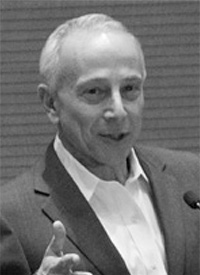
Mark C. Fishman
Mark C. Fishman is President of the Novartis Institutes for BioMedical Research. He was elected a Fellow of the American Academy in 2002.
I was asked to opine on how to increase the effectiveness of science in academia – probably because of the illusion that someone from industry would be better equipped to speak on the issue. I do have a different perspective, having progressed over the course of a couple of decades from very basic work to my current work, which is to discover new medicines. And I have a very simple message: for the health of the country, both medically and economically, the scientific mission in academia must be to conduct basic research. You would think that would be obvious, but because this is a time of limited resources, there tends to be a push at both the levels of funding agencies and institutions, both in Europe and the United States, to be more “practical.”
It is true that about 40 percent of the improvement in health care over the last century is due to new medicines. Research that helps to generate new medicines is important. Each new medicine is based upon decades of fundamental discovery work. For many of the most important new medicines used today, the time from fundamental discovery to approval is thirty to forty years. The “practical” part – the actual discovery and development of a new medicine – takes a small fraction of this time. It is the recognition of the target and its potential link to medicine that is such a long and winding road – and these, the basic discoveries that are the foundation of drug discovery, take place in academia.
Hence, it seems unwise to deflect much funding of academic research from basic to more “practical” activities because it would diminish the real key to making new medicines, which is basic discovery. One might therefore ask how many new medicines would even emanate from such a diversion. Each year, only about twenty to thirty new drugs are approved by the FDA, of which only a handful are directed to truly novel targets. These come from the more than three thousand self-described pharmaceutical companies and cost on average $1–2 billion per new drug. So in the context of a $30 billion NIH budget, for example, any diversion is unlikely to have more than a negligible effect on the pace of drug discovery, while constraining basic discovery to a far greater degree.
So I believe universities’ commitment to basic research should remain, and they should be set up so as to remain devoted to long-term fundamental discovery. But academia could make some changes. For one, it could expand its current definition of interesting and worthwhile research. Many fields of pathophysiology have fallen by the wayside over the years, and it is time to return to those – including toxicology, pathology, and pharmacology. How about training in academia for potential careers in biotechnology? What do we look for in an investigator at Novartis? We use the same criteria that you would use to hire a faculty member. We look for someone who has had a very strong track record of discovery in basic science. In addition, we seek clinicians who can do translational medicine and people with specific expertise – in IT, for example. At least in the research and development arenas, prior training in management or business is irrelevant.
Even as we celebrate the beauty and power of the science that is done at Duke and other great American universities, we must also continue reminding policy-makers that basic research is what we need to make new medicines and to improve the health of the country more generally.
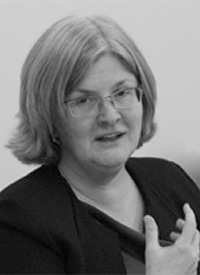
Nancy C. Andrews
Nancy C. Andrews is Dean of the Duke University School of Medicine and Vice Chancellor for Academic Affairs. She was elected a Fellow of the American Academy in 2007.
My question for the panel is, What is the low-hanging fruit? What can investigators, academic institutions, the NIH, and others do quickly and without much resistance to start moving in the right direction?
Harold Varmus
What we have tried to do at the National Cancer Institute is to start a few new grant programs to address some of these problems. One is to try to give a greater degree of stability and reassurance to our very best investigators by reinitiating an Outstanding Investigator Award that would give very substantial support for most of an investigator’s research program for seven years. To start, we are making fifty awards a year every year for seven years, evaluating the program as we go along.
Second, we are trying to accelerate training by discussing and hopefully soon implementing a program that would identify the best graduate students and move them more quickly through graduate training into postdoctoral positions. Third, we are trying to embody our enthusiasm for staff scientist positions by offering independent grants to people who would be either working as independent scientists in existing laboratories, working as directors of core facilities, or serving the research needs of entire communities of scientists. Fourth, we are trying to change some of the evaluation procedures. For example, throughout the NIH-supported world, grant applicants are no longer required to just simply list their citations, but instead to describe in half a page of prose their five most important contributions to science. Investigators are then evaluated more by their substantive achievements rather than by whether they were able to get their papers into the most prestigious journals. Regardless of such progress, I am concerned that we are just choosing to change the things that are easiest to change and not trying to instantiate deeper change. Deeper change is difficult, because the system is fragile and inherently conservative, and perturbations of it run big risks.
Susan R. Wente
I commented on some of these short-term solutions before, but I would add that we need to charge our students to be proactive in seeking mentoring and making well-informed decisions about each step of their career path along the way, rather than waiting until the fourth year of graduate school.
Tania Baker
Making real scientific tracks for the research scientists or directorships for the core facilities are both goals we can focus on now, but unfortunately it is still hard to figure out how to fund those people. Many of us are involved in trying to raise money for our institutions and our departments. When we are doing that, we can also advocate for increased freedom to pursue different types of activities. Endowed fellowships for particularly fragile parts of our academic system are extremely useful, such as for professors up for tenure. If their first grant is not funded, that could actually ruin their entire career, because they might not get tenure if their position is not funded.
We can also expose our students and fellows to multiple career options in many ways: having panels of alumni who are in exciting alternative careers; allowing our students to take classes in areas not directly related to their PhD work; encouraging them to take teaching classes (we have a little teaching certificate program at MIT that our students often take); and providing brief (six- or ten-week) internships in companies, policy-research organizations, or government. Some universities already have such opportunities, but many of the students do not know that they exist or take advantage of them; spreading awareness of those resources for career planning is also something we could work more on.
Mark Fishman
I am a bit reluctant to talk about incremental change because it often takes the focus off the need for substantive change. However, I think that one of the opportunities for industry to help is, as Tania was saying, to have more shared exposure. We have a postdoc program, for example, with one hundred scientists in it, co-mentored by someone in academia. We have sabbaticals where our scientists go into academia, and academics can come in and do sabbaticals at Novartis as well. It would be wonderful to encourage the faculty of large research universities to teach more.
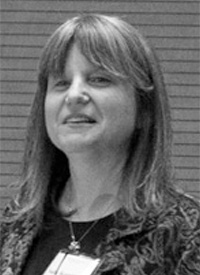
Sally Kornbluth
Sally Kornbluth is Provost and James B. Duke Professor in the Department of Pharmacology and Cancer Biology at Duke University School of Medicine.
Should we be complacent about the stagnant NIH budget? Should we just assume that it will be flat for the foreseeable future, or can we somehow push for expansion? I would like to hear what everyone has to say, but Harold Varmus may have some insider information.
Harold Varmus
There seems very little prospect for a major increase in the NIH budget, but we should not abandon hope by any means. First, recall that the President asked this year for a $1 billion increase. One billion dollars sounds to most of us like a lot of money – and it is a 3 percent increase over last year’s budget – but this amounts to just a bit more than inflation and more importantly would get us back to a little below the place we were before sequestration (in other words, to 2012 levels). We frequently talk about the inflation rate (or the biomedical research price index, which is about two times the nation’s overall inflation rate) as the standard minimum for keeping the NIH budget at current levels of spending power. But we have to face the fact that science itself has also become a lot more expensive. In my area of research, what we spend on the research of a single postdoc has gone up threefold over the last ten to twenty years. Much of that can likely be attributed to the rising costs of prepackaged kits and animal care, as well as to the increasing ease of access to complex and expensive services such as genomics. We cannot be sure whether the President’s request for that billion dollars will be met. There are specific (and worthwhile) projects that President Obama has identified that he wants to spend this money on. Moreover, even if the requested increase is awarded, it is not clear whether Congress is going to mandate that the NIH follow the President’s instructions for spending it. You may have noticed the President’s requests to Congress are not always greeted with enthusiasm, especially now that we have two Republican chambers.
But over the long run we should be thinking in much broader terms than just next year’s budget. After all, people who are being trained now will be doing research, we hope, for the next thirty, forty, or fifty years, and we need to think with a much broader perspective to ensure their future. I notice with pleasure that the American Academy’s Restoring the Foundation report, as well as statements by several individuals active in this debate, have advocated that Congress put in place a five-year rolling budget projection, as well as annual appropriations. Multiyear appropriations seem unrealistic. But the five-year projection is something that we may be able to persuade Congress to do if we got all of the elements – industry, universities, patient advocates, and scientists working at universities – to say together, “Let’s have a template for what we think we would like to spend if the economy allows it and get people to work together to have a much longer-range view of how the budget ought to evolve.” Let’s persuade Congress to adopt a standard to live up to, rather than simply waiting to see whether the economy is properly primed, whether politics are right, and whether the President has made a certain kind of recommendation.
Susan R. Wente
I am not as near to the crystal ball as Dr. Varmus is, but I think I can speak to a couple of points. First, I think we are very fortunate to have people lobbying to increase NIH funding, but we each need to take personal responsibility for conveying as clearly as possible to laypeople – to our parents, grandparents, neighbors – the value of basic research and the consequences of not funding it. That is a responsibility for all of us to take on in addition to the leadership that we have advocating directly with those who fund the NIH.
Another aspect of this is that our research programs are not only supported by the NIH, but also by philanthropists and by institutions such as biomedical enterprises and academic medical centers. We need to think carefully about how to steward our resources in the most effective manner, how we can change the way we work to get more bang for our buck, as I like to say. That takes people coming together and being willing to share and think about new ways of doing things more efficiently.
Tania Baker
Yes, I absolutely think that we should continue to communicate with the NIH as clearly as we can and help others communicate to the NIH and to the government generally the incredible importance of basic research. We, as experimental scientists, can do so many things today because of completely unanticipated discoveries of basic research. It is a very compelling story that we should keep telling.
We have been talking a lot about medical centers. I am fortunate enough to work at one of the only universities that does not have a medical school. Actually, MIT has hard nine-month salaries for all faculty. I have noticed in the last couple of years that people leaving my lab – and people leaving the labs in general – are looking for positions like those at MIT, where they may have a higher teaching load than people at the medical centers, but where they have this guaranteed salary forever if they get tenure. Additionally, if professors are paid by the university, then grant money goes a lot farther.
Mark Fishman
I do not think we can be complacent about NIH funding levels, but the problem goes a lot deeper than that. One issue is that most people in this country do not believe in the importance or power of science. I think fundamental science education must be improved at all levels.
© 2015 by Richard H. Brodhead, Harold Varmus, Susan R. Wente, Tania Baker, Mark C. Fishman, Nancy C. Andrews, and Sally Kornbluth, respectively
To view or listen to the presentations, visit https://www.amacad.org/biomedical.